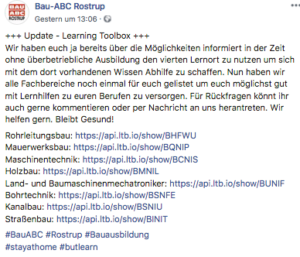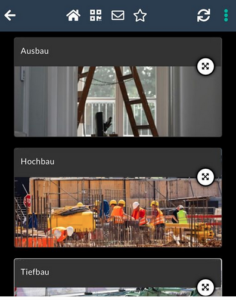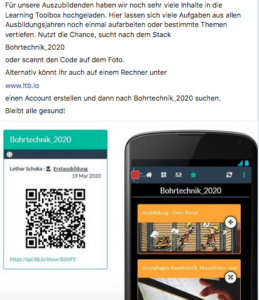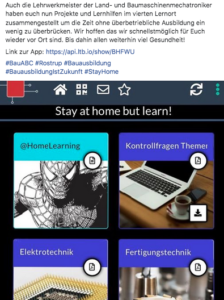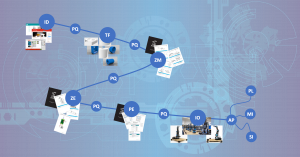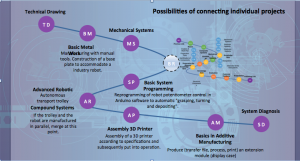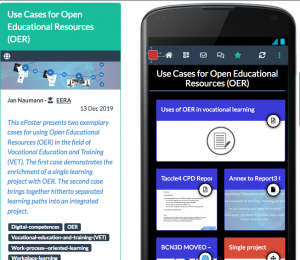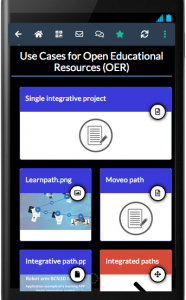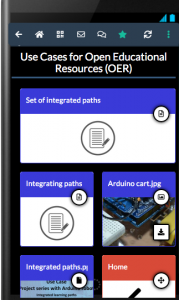Updates on the corona crisis – What news from the conference fronts?
During the last few weeks my blog posts have been overshadowed by the corona crisis – for obvious reasons. So far I have discussed the impact on European cooperation projects and for their designed events. I have also drawn attention to the fact that the main product of our EU-funded Learning Layers (LL) project – the Learning Toolbox (LTB) has proved to be useful as support for apprentice training during these exceptional times. Yet, as I have mentioned earlier, I need to inform myself better on the new developments in online learning and in organising online events. With this post I give some examples, what is happening with some conferences and how the respective communities are dealing with the new situation. Here, it is worthwhile to note that I am following these developments from a safe distance and I will only refer to ongoing discussions.
Cancellation of ECER 2020 and the VETNET network – what options are being discussed
Shortly after my recent blog we received the news that the European Conference on Educational Research (ECER) that was scheduled to take place at the end of August 2020 has been cancelled. For the moment we do not know, what further measures will be taken at the level of the umbrella organisation European Educational Research Association (EERA). We all understand that this has been a hard decision and that it will have manifold implications.
What we do know, is that the VETNET network (the EERA network for research in vocational education and training (VET)) has started an internal discussion, how to make the best out of the difficult situation. Here it is worthwhile to note that VETNET covers a wide range of research in the field of VET and has developed traditions of its own to strengthen the European research community. At present the following options merit special attention:
- Ensuring the production of a VETNET proceedings publication in 2020: For several years the VETNET network has been able to produce its own annual proceedings publication based on conference papers presented at the respective ECER. Currently the VETNET board is willing to continue this tradition – even if the conference will not take place. This, of course, requires the agreement of the authors of accepted contributions. (From this point of view some other options for the authors have also been discussed.)
- The possibility of organising an online event: So far the VETNET network has not organised online events attached to the ECER or independently of it. Now, the possibility has been put into discussion and some experiences from other conferences will be explored. However. on this point the discussion has not yet been concluded.
ECTEL and the complete online conference
As a contrast to ECER, the European Conference on Technology Enhanced Learning (ECTEL) has still kept the option open to organise this year’s conference as a face-to-face event in September. However, the conference organisers have made an explicit statement regarding the risks provided by the COVID-19 virus for the conference. Thus, the organisers have been prepared to transfer the conference into an online event and to secure the publication of the contributions in a proceedings publication. Latterly, the health office of Heidelberg had also advised the organisers, not to have a large face-to-face event in the autumn 2020. Therefore, the organising committee had decided to organise the EC-TEL 2020 fully as an online event.
Issues and challenges for online events
In the light of the above, it is apparent that many research communities and professional communities are looking for ways to transform their traditional conferences into online events. Some of them are approaching commercial software providers who offer solutions for large-scale online conferences. From the perspective of active interactivity among the participants these solutions may not be ideal. So far some conferences have piloted with software solutions that transform traditional posters into ePosters and provide interactive online communication possibilities. Here the functionality of Learning Toolbox has been praised in many contexts. However, so far it has been used for ePosters alongside face-to-face conferences. Now, the challenge is to find a good combination of software solutions that serve different purposes. Whilst there was firstly a phase of uncertainty, the LTB-developers and their start-up company Kubify has now been facing numerous requests to support relatively large conferences with ePosters. Now, as I have understood it, the ePosters are becoming part of the mainstream arrangement of conferences.
—
I guess this is enough for a news update. I will continue my explorations on different solutions for online learning arrangements and for online conferences with the help of colleagues who have brought me this far. My special thanks go to Gilbert Peffer with whom I will continue our talks in a short while.
More blogs to come …
